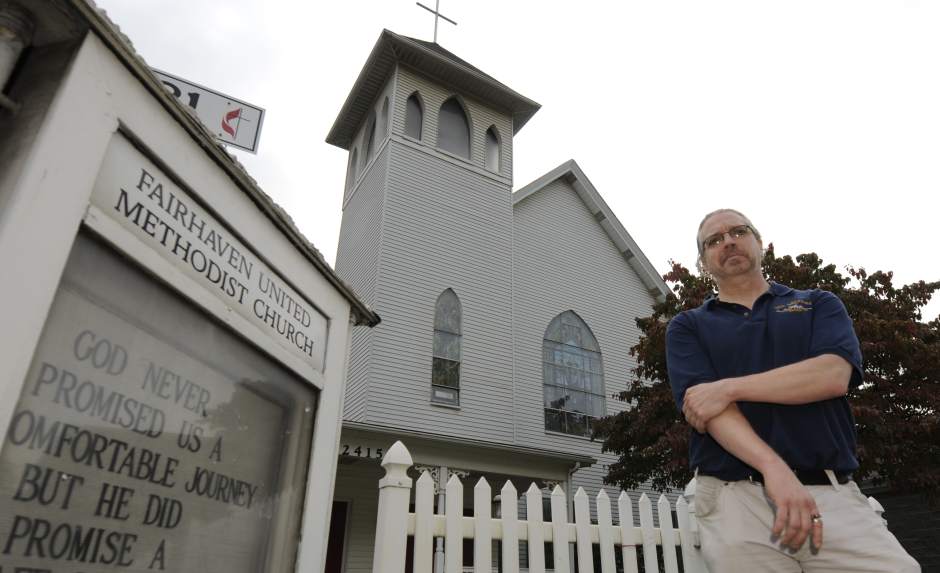Fairhaven: Overbrook's last vestige of coal mining patch town

Source: triblive
Fairhaven United Methodist Church might be a place of worship, but it’s the last known visage of an old coal mining patch town known as “Hell’s Hole.”
An anomaly along congested Saw Mill Run Boulevard in what is now Overbrook, the white clapboard church with a square bell tower and stained glass windows hugs the narrow artery amid commercial buildings, an auto dealership and streams of traffic.
It has survived for 106 years despite numerous floods, financial hardship, a condemnation by Pittsburgh and occasional attempts by the state to take it for highway improvements.
City Council last month designated the church as a historic landmark, meaning the city’s Historical Review Commission and council must approve before anyone can alter its exterior or tear it down.
“It’s my second family, extended second family,” said Ken Kohley, 75, of Overbrook, a member since 1965. “We have open arms for anybody that comes in.”
In the 1880s, the Fairhaven section was known as “Hell’s Hole” for the barrooms and brothels that lined its streets, according to a church history authored by Rich Cummings, 50, of Shadyside, a longtime congregant.
Coal miners organized the church in 1881, and it serves to this day as a community and faith center. Original membership was 10; it’s now about 170.
Its Sunday school educated children, who were working in the mines at age 5 or 6, after work, Cummings said. Literacy rates among the young improved from about 10 percent in 1880 to 85 percent by 1910, he said.
“We always give credit to the big folks, the wealthy,” he said. “It’s important to sort of bring to the attention of people the importance poor people had in the history of Pittsburgh. This was a poor church.”
Fairhaven members first met in a school house, according to the church history. In 1890, members moved to a building they built on Glenbury Street. The congregation outgrew the building, and the current church was dedicated on Dec. 8, 1907.
Cummings said the church was supported by miners who made 8 cents for every ton of coal they dug.
“People who were poor were giving 10 cents a week,” he said. “That was a huge amount. You see in church records people giving 2 cents a week, 5 cents a week.”
It was difficult to maintain the building under those financial conditions, and annual flooding on Saw Mill Run, which continues to this day, took its toll on the building’s foundation.
In 1939, a city building inspector condemned the church, fearing the walls were not strong enough to support the roof.
The congregation had a new foundation installed, as well as steel supports through the top of the sanctuary to shore up the walls.
The state Department of Transportation threatened eminent domain several times, and took 12 feet of front lawn for a highway widening project in 1931.
In 1959, threats of eminent domain prompted members to buy property for a new church, but they sold it after PennDOT scrapped the highway project.
“The fact that it is still around is sort of a testament to the people who live there and go to the church,” said City Councilwoman Natalia Rudiak, who grew up in nearby Carrick and represents Overbrook. “It’s amazing when you consider how so many churches are really struggling right now, but Fairhaven just keeps on going.”
The church provides space for Narcotics Anonymous meetings and religious services for a group of Spanish-speaking people, Kohley said. It’s also a polling place, offering meals on Election Day.
“It’s the only building left along Route 51 that was part of the original Fairhaven community,” said Carol Anthony, president of Overbrook Community Council. “The church is really the center of the community.”

